This article was co-authored by wikiHow Staff. Our trained team of editors and researchers validate articles for accuracy and comprehensiveness. wikiHow's Content Management Team carefully monitors the work from our editorial staff to ensure that each article is backed by trusted research and meets our high quality standards.
There are 11 references cited in this article, which can be found at the bottom of the page.
This article has been viewed 210,156 times.
Learn more...
Solving a higher degree polynomial has the same goal as a quadratic or a simple algebra expression: factor it as much as possible, then use the factors to find solutions to the polynomial at y = 0. There are many approaches to solving polynomials with an term or higher. You may need to use several before you find one that works for your problem.
Steps
Recognizing Factors
-
1Factor out common factors from all terms. If every term in the polynomial has a common factor, factor it out to simplify the problem. This is not possible with all polynomials, but it's a good approach to check first.[1]
-
Example 1: Solve for x in the polynomial .
Each term is divisible by 2x, so factor it out:
Now solve the quadratic equation using the quadratic formula or factoring:
The solutions are at 2x = 0, x+4=0, and x+2=0.
The solutions are x=0, x=-4, and x=-2.
-
Example 1: Solve for x in the polynomial .
-
2Identify polynomials that act like a quadratic. You likely already know how to solve second degree polynomials, in the form . You can solve some higher-degree polynomials the same way, if they're in the form . Here are a couple examples:
-
Example 2:
Let :
Solve the quadratic using any method:
so a = -2 or a = 2/3
Substitute for a: or
x = ±√(2/3). The other equation, , has no real solution. (If using complex numbers, solve as x = ±i√2). -
Example 3: does not follow this pattern, but notice you can factor out an x:
You can now treat as a quadratic, as shown in example 2.
Advertisement -
Example 2:
-
3Factor sums or differences of cubes. These special cases look difficult to factor, but have properties which make the problem much easier:
-
4Look for patterns to find other factors. Polynomials that do not look like the examples above may not have any obvious factors. But before you try the methods below, try looking for a two-term factor (such as "x+3"). Grouping terms in different orders and factoring out part of the polynomial may help you find one.[5] This is not always a feasible approach, so don't spend too much time trying if no common factor seems likely.
-
Example 4:
This has no obvious factor, but you can factor the first two terms and see what happens:
Now factor the last two terms (6x+2), aiming for a common factor:
Now rewrite this using the common factor, 3x+1:
-
Example 4:
Rational Roots and Synthetic Division
-
1Try to identify one root of the polynomial. Synthetic division is a useful way to factor high-order polynomials, but it only works if you know one of the roots (or "zeroes") already. You may be able to find this by factoring as described above, or the problem may provide one. If so, skip down to the synthetic division instructions. If you do not know a root, continue to the next step to try to find one.[6]
- The root of a polynomial is the value of x for which y = 0. Knowing a root c also gives you a factor of the polynomial, (x - c).
Testing for Rational Roots
-
1List the factors of the constant term. The "rational roots" test is a way to guess at possible root values. To begin, list all the factors of the constant (the term with no variable).[7]
- Example: The polynomial has the constant term 9. Its factors are 1, 3, and 9.
-
2List the factors of the leading coefficient. This is the coefficient in the first term of the polynomial, when it is arranged from the highest-degree term to the lowest. List all of that number's factors on a separate line.
- Example (cont.): has a leading coefficient of 2. Its factors are 1 and 2.
-
3Find the possible roots. If the polynomial has a rational root (which it may not), it must be equal to ± (a factor of the constant)/(a factor of the leading coefficient). Only a number c in this form can appear in the factor (x-c) of the original polynomial.[8]
- Example (cont.): Any rational roots of this polynomial are in the form (1, 3, or 9) divided by (1 or 2). Possibilities include ±1/1, ±1/2, ±3/1, ±3/2, ±9/1, or ±9/2. Don't forget the "±": each of these possibilities could be positive or negative.
-
4Test roots until you find one that fits. None of these are guaranteed to be roots, so you'll need to test them with the original polynomial.
-
Example: (1/1=1) is a possible root. If it turns out to be an actual root, plugging it into the polynomial should result in zero.
, so 1 is confirmed to be a root.
This means the polynomial has the factor (x-1). - If none of the possibilities work out, the polynomial has no rational roots and cannot be factored.
-
Example: (1/1=1) is a possible root. If it turns out to be an actual root, plugging it into the polynomial should result in zero.
Synthetic Division
-
1Set up a synthetic division problem. Synthetic division is a way to find all the factors of a polynomial, if you already know one of them. To set it up, write a root of the polynomial. Draw a vertical line to its right, then write the coefficients of your polynomial arranged from highest degree exponent to lowest. (You do not need to write the terms themselves, just the coefficients.)[9]
- Note: You may need to insert terms with a coefficient of zero. For example, rewrite the polynomial as .
-
Example (cont.): The rational roots test above told us that the polynomial has the root 1.
Write the root 1, followed by a vertical line, followed by the coefficients of the polynomial:
-
2Carry down the first coefficient. Copy the first coefficient onto the answer line. Leave a blank line in between the two numbers for later calculations.
-
Example (cont.): Carry the 2 down to the answer line:
-
Example (cont.): Carry the 2 down to the answer line:
-
3Multiply that number by the root. Write the answer directly below the next term, but not on the answer line.[10]
-
Example (cont.): Multiply the 2 by the root, 1, to get 2 again. Write this 2 in the following column, but on the second row instead of the answer line:
-
Example (cont.): Multiply the 2 by the root, 1, to get 2 again. Write this 2 in the following column, but on the second row instead of the answer line:
-
4Add the contents of the column together to get the next portion of the answer. The second coefficient column now contains two numbers. Sum them together and write the result on the answer line directly below them.
-
Example (cont.): 1 + 2 = 3
-
Example (cont.): 1 + 2 = 3
-
5Multiply the result by the root. Just as you did before, multiply the latest number on the answer line by the root. Write your answer underneath the next coefficient.
-
Example (cont.): 1 x 3 = 3:
-
Example (cont.): 1 x 3 = 3:
-
6Find the sum of the next column. As before, add up the two numbers in the column and write the result on the answer line.
-
Example (cont.): -12 + 3 = -9:
-
Example (cont.): -12 + 3 = -9:
-
7Repeat this process until you reach the final column. The last number on your answer line will always be zero. If you get any other result, check your work for mistakes.[11]
-
Example (cont.): Multiply -9 by the root 1, write the answer under the final column, then confirm that the sum of the final column is zero:
-
Example (cont.): Multiply -9 by the root 1, write the answer under the final column, then confirm that the sum of the final column is zero:
-
8Use the answer line to find another factor. You have now divided the polynomial by the term (x - c), where c is your factor. The answer line tells you the coefficient of each term in your answer. The x portion of each term has an exponent one lower than the original term directly above it.
-
Example (cont.): The answer line is 2 3 -9 0, but you can ignore the final zero.
Since the first term of the original polynomial included an , the first term of your answer is one degree lower: . Therefore, the first term is
Repeat this process to get the answer .
You have now factored into .
-
Example (cont.): The answer line is 2 3 -9 0, but you can ignore the final zero.
-
9Repeat if necessary. You may be able to factor your answer into smaller parts using the same synthetic division method. However, you may be able to use a faster method to finish the problem. For example, once you have a quadratic expression, you can factor it using the quadratic formula.
- Remember, to start the synthetic division method, you'll need to know one root already. Use the rational roots test again to get this. If none of the rational root possibilities check out, the expression cannot be factored.
-
Example (cont.) You've found the factors , but the second factor can be broken down further. Try the quadratic equation, traditional factoring, or synthetic division.
The final answer is , so the roots of the polynomial are x = 1, x = -3, and x = 3/2.
Community Q&A
-
QuestionIn JEE (adv) 2011, a question was to find the number of roots of x^4 - 4^3 + 12x^2 +1 = 0; although I have the solution, how would I solve an equation like this?
 Official channel of HypernovaCommunity AnswerIf you try the rational root test, you find that the equation has no rational roots. Therefore, you will have to use numerical methods to find the other roots. You could try the Newton-Raphson Method for the irrational roots.
Official channel of HypernovaCommunity AnswerIf you try the rational root test, you find that the equation has no rational roots. Therefore, you will have to use numerical methods to find the other roots. You could try the Newton-Raphson Method for the irrational roots.
Warnings
- If you get an imaginary root (and you are working with a problem where imaginary roots matter), don't forget that there will be a zero at that number and its complex conjugate. If (x-3i) is a root, then so is (x+3i).⧼thumbs_response⧽
References
- ↑ https://www.khanacademy.org/math/algebra2/x2ec2f6f830c9fb89:poly-factor/x2ec2f6f830c9fb89:common-factor/a/taking-common-factors
- ↑ https://www.khanacademy.org/math/algebra2/polynomial-functions/advanced-polynomial-factorization-methods/v/factoring-sum-of-cubes
- ↑ https://www.khanacademy.org/math/algebra2/polynomial-functions/advanced-polynomial-factorization-methods/v/difference-of-cubes-factoring
- ↑ http://www.purplemath.com/modules/specfact2.htm
- ↑ https://www.khanacademy.org/math/algebra2/polynomial-functions/advanced-polynomial-factorization-methods/v/factoring-5th-degree-polynomial-to-find-real-zeros
- ↑ https://tutorial.math.lamar.edu/classes/alg/zeroesofpolynomials.aspx
- ↑ http://www.purplemath.com/modules/rtnlroot.htm
- ↑ https://tutorial.math.lamar.edu/classes/alg/zeroesofpolynomials.aspx
- ↑ https://flexbooks.ck12.org/cbook/ck-12-precalculus-concepts-2.0/section/2.5/primary/lesson/polynomial-long-division-and-synthetic-division-pcalc/
About This Article
To solve higher degree polynomials, factor out any common factors from all of the terms to simplify the polynomial as much as possible. If the polynomial can be simplified into a quadratic equation, solve using the quadratic formula. If there no common factors, try grouping terms to see if you can simplify them further. You can also look for special cases like a sum of cubes or a difference of cubes, which can be simplified as well. Keep reading to learn how to solve a higher degree polynomial with synthetic division!

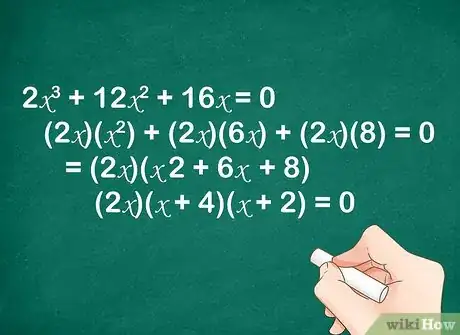

















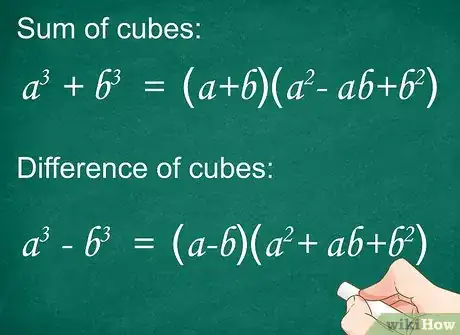






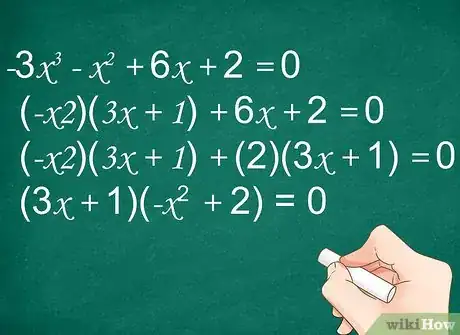




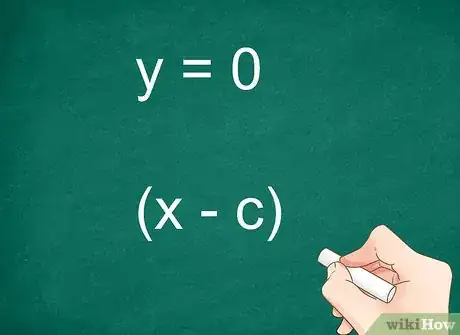
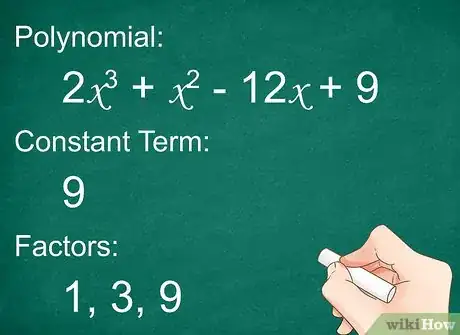

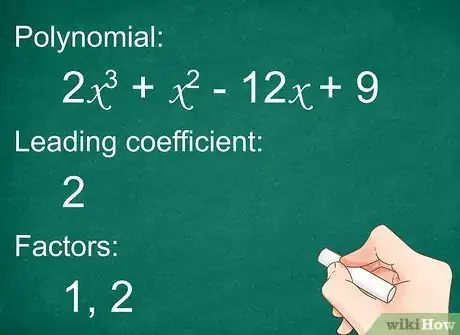
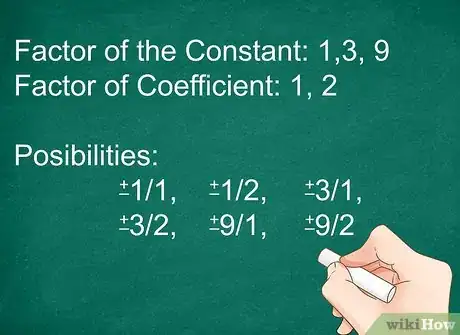
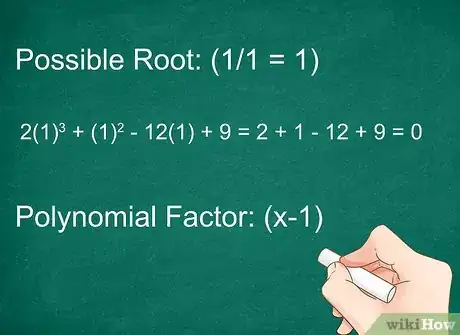

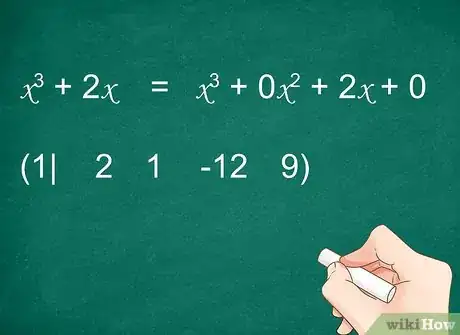



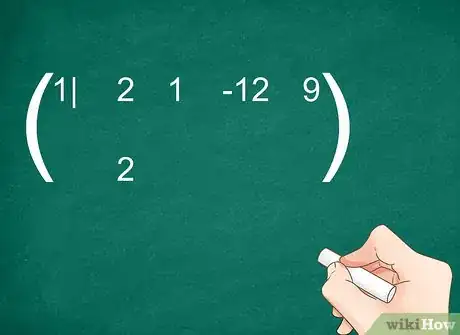

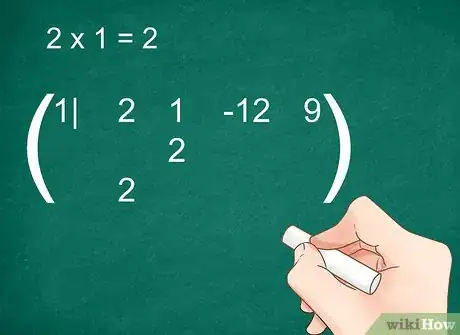

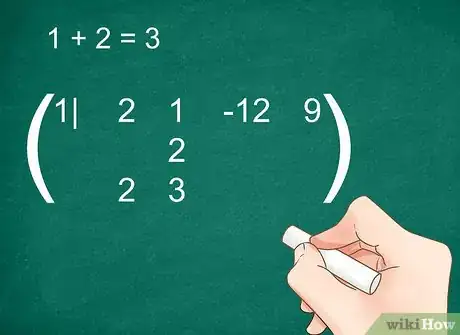

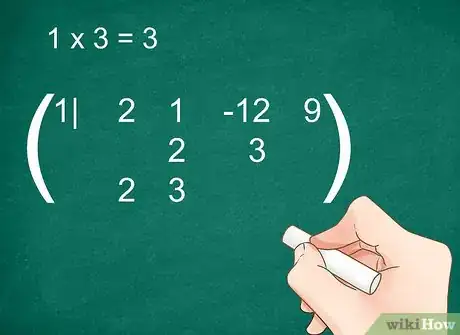

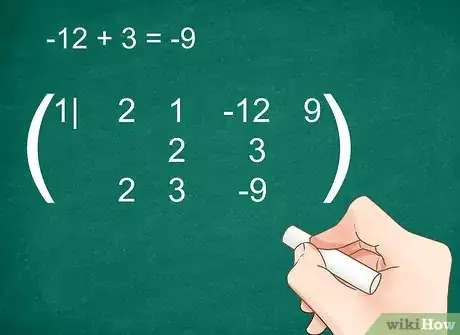

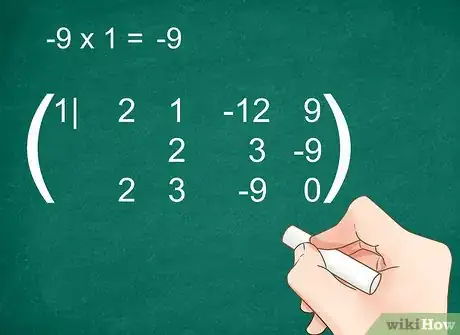

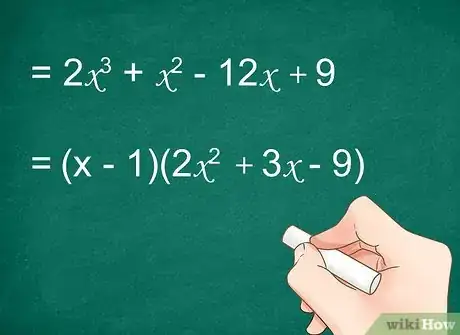



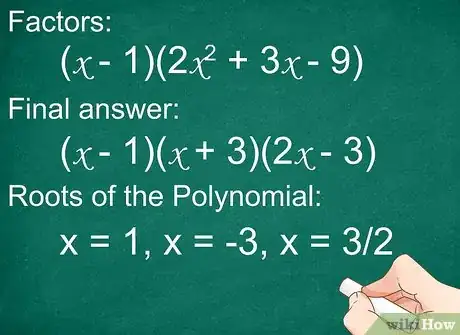

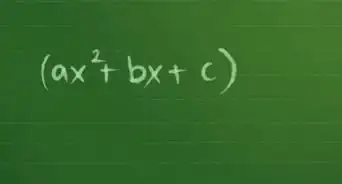
-Step-31-Version-2.webp)
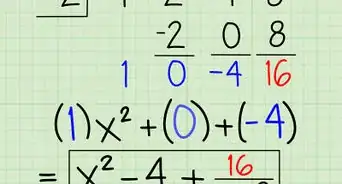


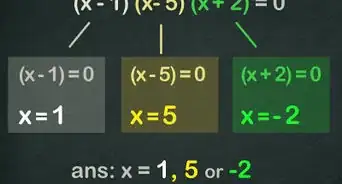
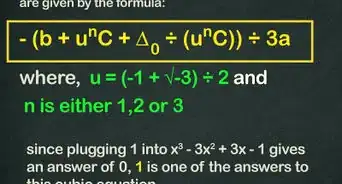


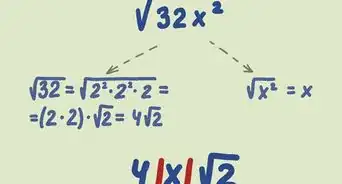
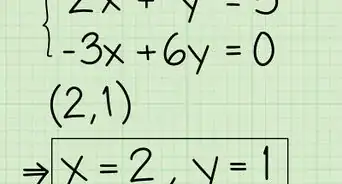

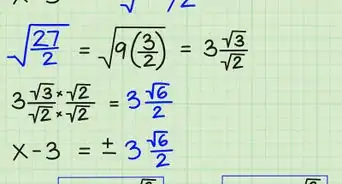








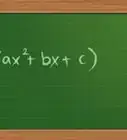
-Step-31-Version-2.webp)




































